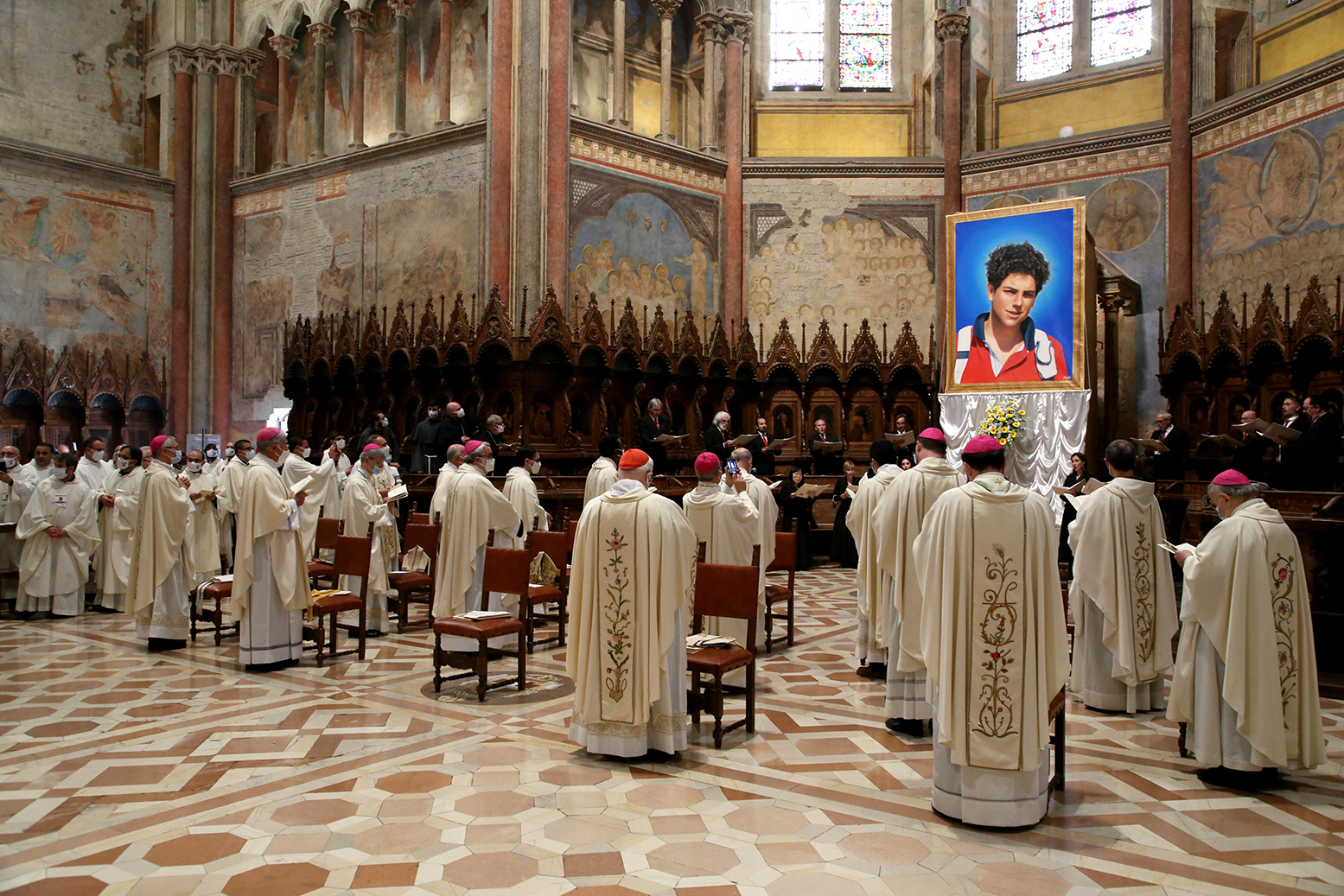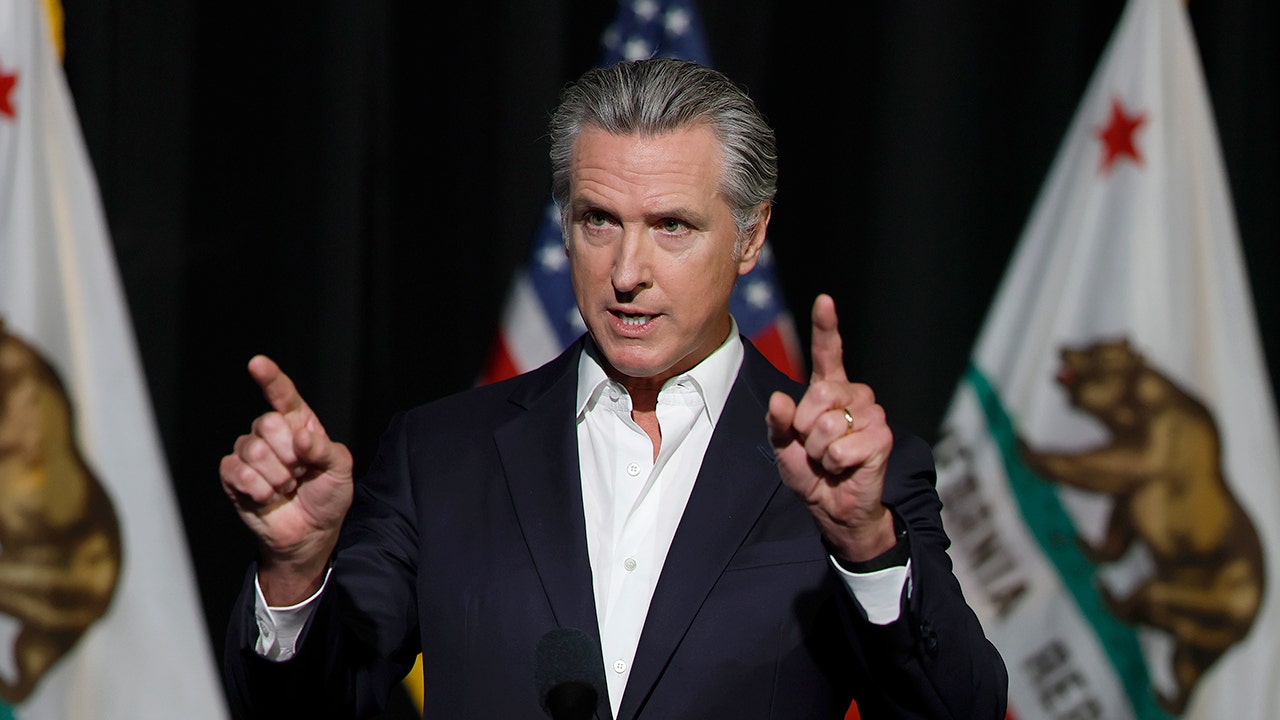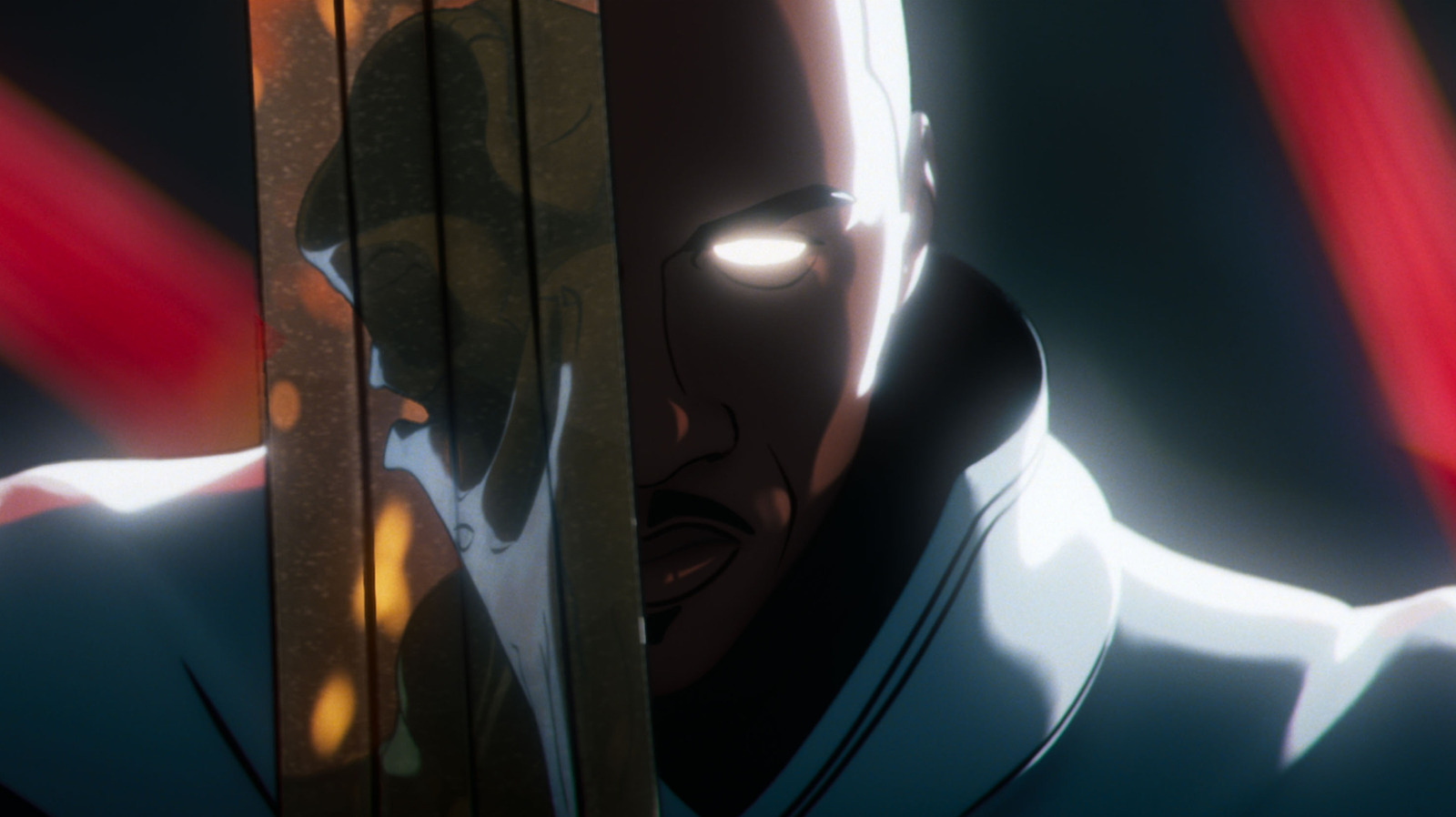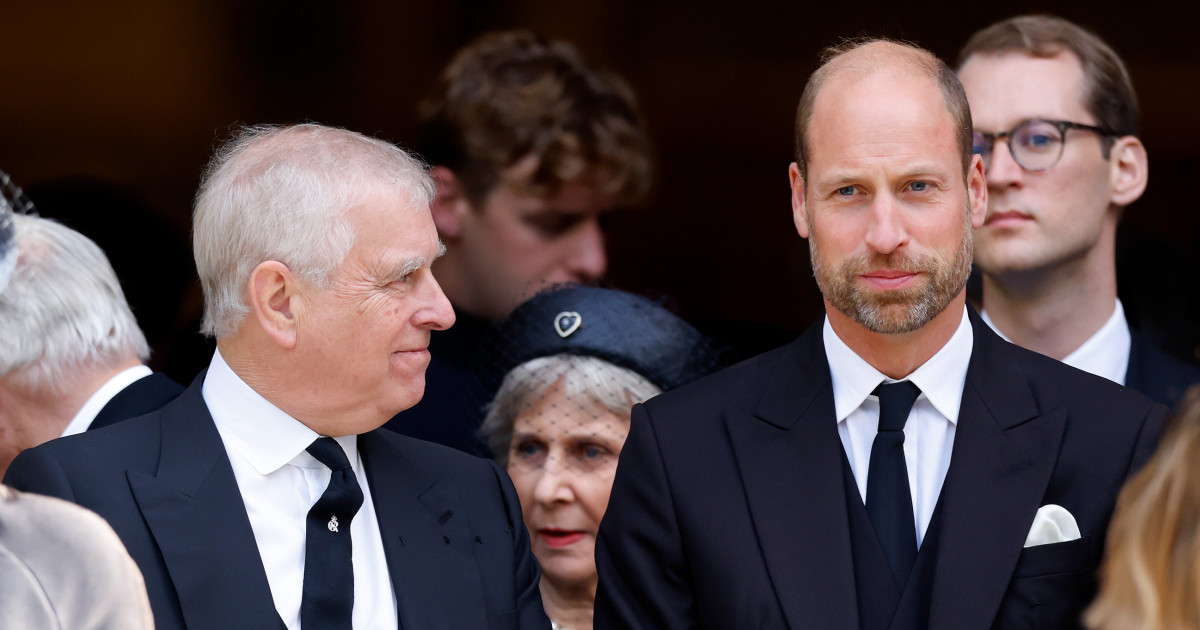Copyright newstatesman

Tucked between shopfronts on Chelsea’s busy Fulham Road, Our Lady of Dolours is a tranquil place. Painted archways and stained-glass windows brighten the Gothic Revivalist church, while behind the altar, a choir of elderly men practices the Gloria Patri, with mixed results. I am heading to the font. In 1991, its waters baptised a baby named Carlo Acutis. Today, there is a poster on the wall beside it. “St Carlo Acutis’ 5 Steps to Being a Saint.” The “St” part has been printed out and tacked on recently. It is only a fortnight since the Catholic Church welcomed its first millennial saint, and I am here to trace Acutis’s journey from his London birth to his Italian tomb, hoping to understand the religious revival happening in young people. The poster maps a straightforward elevation. Take the Eucharist, adore the Eucharist, confess regularly, adore the Virgin Mary and the saints, and love thy neighbour. But that oversimplifies things. Canonisation involves thorough investigations. Candidates must be found to have exhibited “heroic virtue” and to have performed at least two posthumous miracles. Saints these days being less likely to levitate or banish devilish monsters, Acutis’s miracles were both medical. A sickly child was healed after kissing a relic of Acutis’s clothing. Another, a student, recovered from a presumed-fatal brain injury when her mother prayed to him. But Acutis’s sainthood has raised other questions. Canonisation campaigns often take centuries. And ordinarily, community fundraising covers costs entailed. Acutis’s relatives funded his campaign, and he was fast-tracked to sainthood in 24 years. Some worshippers are suspicious. “It was very fast,” one woman tells me. “You can’t blame them for paying, but…” The Acutis’s family fortune is awkward for a religion whose heroes eschewed material wealth. Acutis never washed anyone’s feet. He was the child of a successful insurance broker and a publishing heiress. Two of the earliest people he converted to Catholicism were also his live-in staff. Not that any critics have disputed the saint’s virtue. Those who knew him say he was closely involved in his local church and acted as a mentor to younger attendees. He was someone to laugh with, famous for his love of comedy TV programmes, which he burned onto DVDs for his friends. One former classmate recalled an incident when a Latin teacher’s mispronunciation caused him to say an Italian word meaning roughly “stick it up your arse”. He and Carlo laughed so hard they had to be thrown out of the lesson. A digital native, Acutis was known to edit funny videos for his friends. Then, one day, he filmed himself. Smiling at the camera, he claps his hands: “I am destined to die,” he says. Two months later, he was diagnosed with leukemia and transferred to an intensive care ward. He told his mother he did not expect to survive. A few days later, he was proved right. He died aged 15. I head deeper into the nave, to the church’s prized possession: two strands of Acutis’s hair. The follicles are displayed within a golden disc topped by a cross. Above it there presides a statue of the teen saint, wearing the jeans and polo shirt of his popular images. A young women slips past me to kneel before the relic. She prays for five minutes. Ten minutes. Fifteen minutes. Something is happening with young Brits and Christianity. This year, the Bible Society declared “an exciting turnaround” in Church attendance was being led by younger devotees. Twice as many 18- to 24-year-olds in Britain believe in God now than did in 2021, according to YouGov polls. 41 per cent of these young worshippers who regularly attend church are Catholics. These circumstances have prompted still more scepticism about the Acutis canonisation. His story seems to cater to the Church’s new customers. The press is full of anecdotes recalling him watching The Simpsons and playing Pokémon. Even his saintly deeds have a new-age flavour. An avid computer programmer, Acutis is best-recognised for his religious website cataloguing miracles. One older woman asks: “If they [the church] just chose him because it suits them, are all saints PR stunts?” Another addresses me directly, and asks frankly: “Do you think he’s real?” I whisper: “Do you?” She wrinkles her nose. “My family’s Catholic, it’s my background. But all this, I don’t know…” After Mass, I engage two young men, Doug (26) and Joseph (25). Neither is sure about Acutis. “When I think of a saint, I think of the disciples,” Doug says. “This new stuff isn’t really my thing.” Evidence suggests the youthful Christian revival is led by men. They have plenty of Christian role models to choose from – from moderates like historian Tom Holland to the infamous Tommy Robinson, whose far-right rallies are increasingly accompanied by the chant “Christ is King”. I ask Doug if he knows why Christianity might appeal to young men in particular. “Part of the great thing about church,” he says, “is that I can go every week and just be Doug from Bermondsey.” He sounds relieved to put aside a reputation. I suggest religion offers a way to talk about feelings without talking about feelings. He chuckles. “Yeah. I see what you mean. I think that’s right.” He doesn’t enjoy venturing “into the weeds” of doctrine. Raised Catholic, he returned to religion at university, trying out services during weekly “church crawls”. “I still don’t know what all their denominations were,” he says. “The fundamentals are the same.” Doug walks an hour to Mass every week. He says it gives rhythm to his life. “And to be honest,” he adds, somewhat sheepishly, “I do like the architecture.” For Joseph, rules are the point. He thinks this is why many young men are drawn to Christianity. “People need rules to live by. And if your rules are ordained… there’s something powerful in that.” We talk about decision fatigue and oppressive online self-improvement culture. “You go on Instagram now and every third reel is some gym bro telling you to get off your phone,” he says. “Religion gives you some discipline – it’s going to give you an edge.” He is hostile to any clerical overtures to modernity. “If we start changing the rules,” he says, “what’s the point? I think part of the return to religion is a reaction to the 1990s and early 2000s. It’s like, they were this experiment in having whatever you want. And it didn’t work. So now, people are looking for something else.” “St Carlo Acutis’ 5 Steps to Being a Saint” is reminiscent of modern self-help books, like Jordan Peterson’s 12 Rules for Life and Stephen Covey’s The 7 Habits of Highly Effective People. Simple steps, miraculous results. The marketing makes sense for saint for St Carlo, whose taglines include “God’s influencer” and “the patron saint of the internet”. My pilgrim’s trail takes me to Assisi in central Italy, where Acutis chose to be buried. He holidayed there as a child, and the hilltop town is known for its associations with St Francis. When I arrive, the dazzling limestone buildings and wide views seem to invite rapture. I hang about in the piazza outside Santa Maria Maggiore, the church which houses his tomb. It’s a humble building. The steep slope leading down to its plain facade makes the church look smaller than it really is. A steady stream of worshippers wanders in. Among them, three elderly Italian women shuffle along, scrabbling for memorabilia, texting their relatives and paying supreme inattention to the posters advising silence, no photos and conservative clothing. I join the queue. It’s a simple affair inside the church. Earthquakes have destroyed the frescoes that once decorated its walls. We snake up to the altar. Few spare it more than a passing glance before continuing around the pews. One of my old ladies surges forward, jabbing a woman in the back. “Your bag’s open!” she cries. There’s a little friendly chatter as the problem is solved. But at the back of the church, silence falls. A stone tomb stands beside the door. A window has been fitted into one side, and pilgrims cluster round it, pressing rosary beads and kissing the glass. The old ladies’ eyes are fixed on the holy resting place. Inside lies a boy in jeans and a black zip-up top. His body is preserved, face concealed by a lifelike silicone mask. Every day, hundreds seek solace in his company. Over 620,000 visited in the first eight months of this year. Outside, I chat to a Brazilian woman. Like me, she has travelled from London. “He inspires me,” she says, “to pray, to be a good person. We came to Italy for my brother’s football tournament. He has some days off, so we decided to visit St Carlo. We wanted to see him.” The warmth in her voice is noticeable, like she’s describing visiting a friend. For her recent book, Don’t Forget We’re Here Forever: A New Generation’s Search for Religion, fellow “young person” Lamorna Ash travelled all over Britain visiting 20-somethings who have converted to Christianity. She suggested Gen Z are worn out by cynicism. The generation that grew up amid the financial crisis, austerity and flawed, often-smug neoliberalism is tired of tearing things down. They want to build something up. During the pandemic, when people were isolated from loved ones, Google searches for prayers rose by a third, breaking records across every continent. Between March 2020 and 2021, the Church of England’s main prayer app was accessed 4.4 million times, an increase of 55 per cent. I ask my Acutis fangirl if it’s more mainstream to be a young Catholic these days. “My friends see people online posting about [faith], and it makes it okay to talk about,” she says. “Also, through social media I meet more Catholics like me.” What else does she think is drawing young people to religion? “It’s like… the generation before lived to work, and we don’t want to do that.” She shrugs. “But you have to live for something.” [Further reading: Faith is a half-formed thing]



